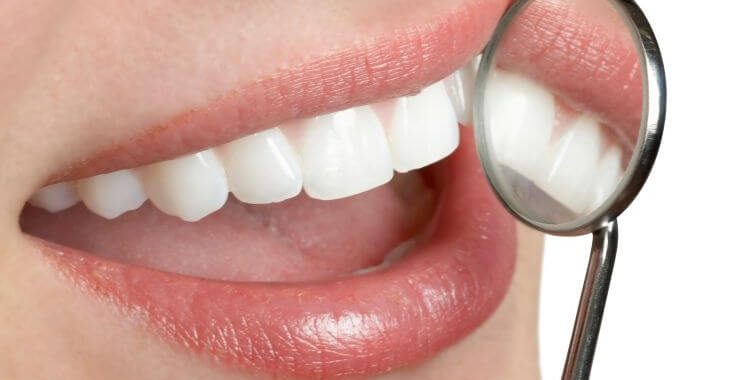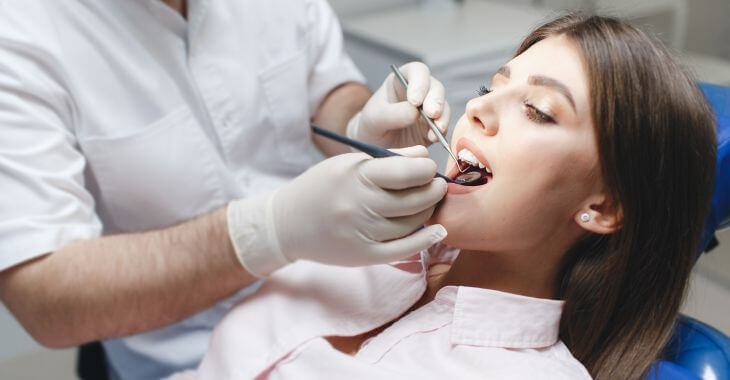What Is a Gingivectomy?

The gingiva, or gum tissue, is important for supporting and nourishing your teeth, but it can become detrimental to the health or appearance of your smile. When gum tissue is infected, also known as periodontal or gum disease, it can lead to serious oral and overall health issues. If there is too much gingiva covering the teeth, it can be a cosmetic concern. A gingivectomy is a procedure that can be used to remove gum tissue to resolve either of these problems. Here is what you need to know about gingivectomy, or gum removal surgery.
What Happens During a Gingivectomy?
Gum removal surgery, or a gingivectomy, is the removal of the gum tissue around the teeth. This procedure can be performed by a dentist or periodontist, and it is an outpatient oral surgery. During the procedure, a scalpel or laser device is used to cut away the gum tissue around one or more teeth. The gum tissue may be sutured or stitched if the procedure is performed by incision – laser gingivectomies usually do not require stitches. Most gum removal surgeries can be performed in about one hour.
Gingivectomy is usually performed to combat periodontal disease, but it can be used for cosmetic purposes. Another similar procedure is a gingivoplasty, which removes less of the gum tissue and is used to reshape the gum line to improve the appearance. Both procedures can help with gum disease by removing infected gum tissue and reducing pockets around the teeth, but gingivoplasty is considered to be a cosmetic procedure.
Cosmetic Gum Removal Surgery
Gingivoplasty is used for individuals who want to achieve a more balanced smile. Some people may have excessive gum tissue that covers their teeth, creating a “gummy smile.” Gingivoplasty is a cosmetic gum removal surgery that can be used to reshape the gums to reveal more teeth. If gum disease is a problem, gingivectomy can be perform first to remove the infected tissue, then gingivoplasty can be used to reshape the gum line. Gingivoplasty can lengthen the appearance of teeth or improve the width by removing gum tissue.
Gingivectomy for Periodontal Disease
Periodontal or gum disease affects almost half of adults over 30. It is a bacterial infection of the gum tissue that can lead to deteriorating gingiva, bone loss, tooth loss and higher risk of other serious health conditions. Buildup of plaque and tartar on the teeth from bacteria can irritate the gums, causing them to recede, creating pockets between the teeth and gum tissue where bacteria can flourish. To stop gum disease from progressing, the teeth roots need to be scraped to remove tartar, and in some cases, gum removal surgery is performed.
Gingivectomy is used for gum disease when it has progressed to a critical level and root scaling and planing alone are not enough to control the infection. Before diseased gum tissue is removed, a through cleaning is performed with root scaling and planing and the mouth is disinfected. The dentist will carefully measure the pockets around the teeth to determine how much of the tissue to remove during the gingivectomy. Depending on the number of deep pockets and teeth impacted by periodontitis, the procedure may be done in sections or quadrants over multiple gingivectomies.
Recovery for Gingivectomy
Most gum removal surgery is performed under local anesthesia, numbing the gum tissue to eliminate any pain during the procedure. After the gingivectomy is complete, it is expected that there will be some residual swelling and bleeding from the surgical site. The area will likely be packed with gauze to minimize bleeding and protect the surgical incisions. The dentist should instruct their patients on how to change the gauze or dressing on the surgical area as needed. Patients will also need to keep the area clean and avoid irritation.
During the first 24 hours after a gingivectomy, no brushing, flossing or cleaning of the teeth or gums should be performed. There may be some discomfort after the anesthesia wears off, but this can be relieved with pain medications. After the first day, it may be possible to clean other teeth in the mouth while avoiding the surgical area. For patients with surgical dressing, it may need to be in place for at least a week while the gum tissue heals. It is important to follow all post-surgery instructions for faster healing.

If you have wondered, “What is a gingivectomy?” now you know the basics about this oral surgery. There are health and cosmetic benefits that can be obtained through gum removal surgery – for many patients, a gingivectomy can improve their oral health and the appearance of their smile. If you have gingivitis or periodontal disease, or a gummy smile, a gingivectomy may be right for you. To learn more about gum removal surgery, contact your dentist or periodontist for more information.
The information provided on this website, including text, graphics, images, and other materials, is intended solely for informational purposes and should not be used as a substitute for professional medical advice, diagnosis, or treatment.




)